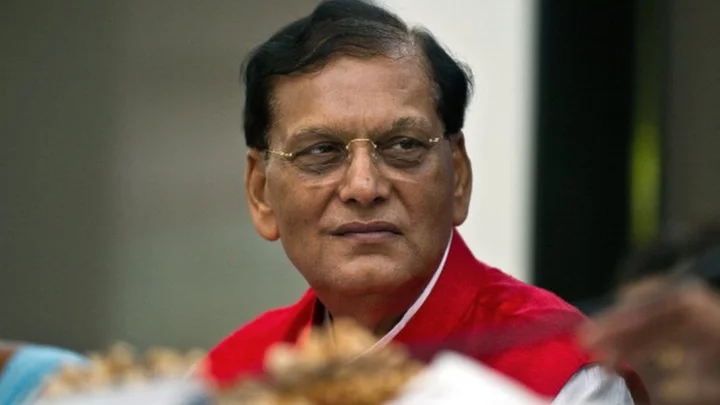
Bindeshwar Pathak: India's 'Toilet Man' who made urinating safely a reality
India is mourning campaigner and social reformer Bindeshwar Pathak who died on Tuesday, aged 80.
2023-08-16 18:26
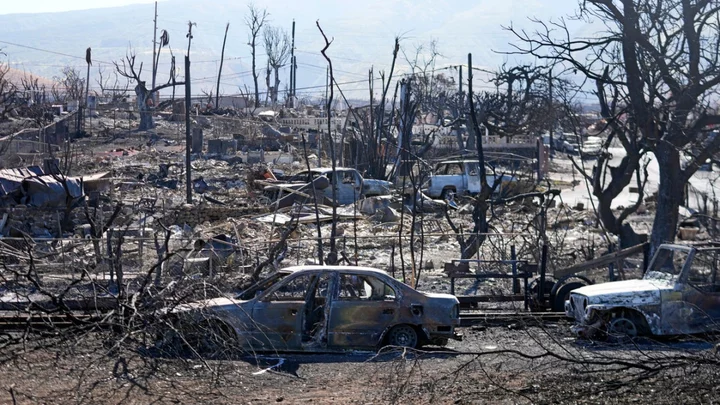
Biden slammed for offering ‘insulting’ $700 payments to Maui wildfire victims
President Joe Biden’s offer of a $700 emergency payment to households impacted by the devastating Maui wildfires has been criticised as an insult to survivors. The death toll from the US’s deadliest wildfires in more than 100 years rose to 106 on Wednesday, with hundreds still unaccounted for, thousands left homeless and an estimated $7bn in economic damage. Mr Biden, who has faced criticism for his handling of the disaster, announced an economic relief package on Monday that included cash payments and temporary housing assistance for survivors. “We're laser-focused on getting aid to survivors, including Critical Needs Assistance: a one-time $700 payment per household offering relief during an unimaginably difficult time. “We have staff on the ground dedicated to helping survivors navigate the registration process,” Mr Biden added. A White House statement confirmed the offer was only available to residents who were displaced from their homes and had critical needs. With 1,200 families sheltering in emergency shelters over the weekend, and 2,200 buildings destroyed, it’s not clear how many Hawaiians will be eligible. It was immediately decried as too small to have a meaningful impact by some commentators. “Make it $700 a month. Per family member in a household. For a minimum of two years,” wrote Scott Santens, the director of the ITSA Foundation which backs universal basic income, on X, formerly known as Twitter. “A one time $700 payment will definitely get their lives, houses and property back! Great job Biden,” another user wrote. Many compared the offer unfavourably to the $113bn in aid the Biden administration has sent to Ukraine since February 2022 to support the war effort, with a further $200m approved on Monday. Financial commentator Mark Wlosinski wrote on X estimated the $700 offer would amount to $1.9m, and labelled it “insulting”. “Can someone please explain how our government can send hundreds of billions to other countries, but chooses to pinch pennies when our own people are in need? An entire town on US soil has been destroyed overnight, and the best our government can do is $700?” Actor Rob Schneider, an outspoken anti-vaxxer and Trump supporter, wrote on X: “The ($115bn) US TAX PAYER DOLLARS TO UKRAINE… $1.9 million dollars to American Maui fire victims. Biden hates Americans…” Right-wing commentator Colin Rugg wrote: “Can someone please explain to me why our leaders are so reckless with money sent to Ukraine but then pinch pennies when the money is spent on Americans?” Mr Biden has faced criticism for his response to the Maui fires from his political opponents. He appeared to brush off a White House pool reporter reporter’s questions when asked for a comment on the rising death toll over the weekend. White House press secretary Karine Jean-Pierre addressed the snub on Monday, saying that Mr Biden remained “deeply concerned” about the wildfires. The newly-indicted former President Donald Trump seized on Mr Biden's apparent no comment, claiming the Democrat “refuses to help or comment on the tragedy”. On 9 August, Mr Biden offered his “deepest condolences to the families of those who lost loved ones in the wildfires in Maui” in a statement as the first fatalities were confirmed. The next day he declared a federal disaster in the state, freeing up federal funds to provide grants for temporary housing and home repairs, and low-cost loans to cover uninsured property losses. Mr Biden made brief remarks during a trip to Salt Lake City last week in his only public comments so far about the unfolding tragedy. “Anyone who's lost a loved one, whose home has been damaged or destroyed, is going to get help immediately,” he said. The White House has since touted its “whole-of-government response effort”, which included deploying 500 federal personnel and thousands of meals, beds and litters of water. The Democratic Hawaii governor Josh Green has publicly praised Mr Biden’s response to the disaster. The Independent has approached the White House for comment. Read More Maui fires – update: Hawaii death toll rises to 106 with 1,000 still missing amid struggle to identify victims Dramatic video shows family narrowly escaping Maui wildfires by fleeing to the ocean How to help victims of Hawaii wildfires ‘I think I messed up’: Moment US representative mistakenly introduces Joe Biden Death toll from devastating Maui fire reaches 106, as county begins releasing names Maui fires death toll rises to 106 amid struggle to identify victims – live
2023-08-16 17:57

Rugby volunteer takes Ukrainians under her wing
Kym Bromley said they were like "rabbits in headlights" when they arrived.
2023-08-16 17:55
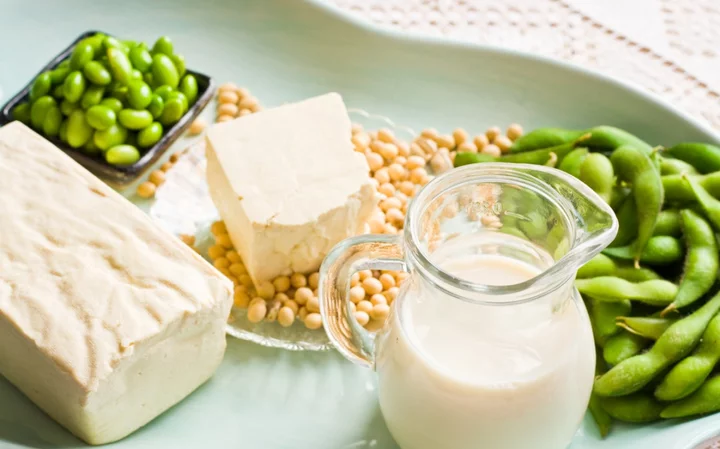
Vegan diet can reduce hot flashes associated with menopause, study suggests
Plant-based diets with a sufficient amount of soy can reduce hot flashes while also aiding weight loss, according to the Women’s Study for the Alleviation of Vasomotor Symptoms (WAVS) trial. A study published by the North American Menopause Society in the journal Menopause found that a diet intervention is about as effective as hormone replacement therapy for reducing menopausal hot flashes, without the associated health risks. “We do not fully understand yet why this combination works but it seems that these three elements are key—avoiding animal products, reducing fat, and adding a serving of soybeans,” explained lead researcher Neal Barnard, MD, president of the Physicians Committee and adjunct professor at the George Washington University School of Medicine. “Our results mirror the diets of places in the world, like pre-Westernized Japan and modern-day Yucatán Peninsula, where a low-fat, plant-based diet including soybeans is more prevalent and where postmenopausal women experience fewer symptoms.” To conduct the study, researchers recruited 84 postmenopausal women that reported episodes of hot flashes two or more times per day. Participants were randomly assigned into two groups. One group was an intervention group that was on a low-fat vegan diet consuming half a cup of cooked soybeans daily, while the other was a control group with no dietary changes for 12 weeks. After 12 weeks, researchers found that those on a vegan diet had a 88 per cent decrease in moderate to severe hot flashes and had lost an average of eight pounds. This is about the same success rate as hormone replacement therapy (HRT), which is usually 70 to 90 per cent effective against hot flashes. The trial was split into two parts, the first being published in 2021 and the second being published this year. It successfully addressed the point that there may be positive changes seen in menopause relief due to seasonal temperature variations. The first trial, which was conducted during the autumn season raised the question of whether this symptomatic improvement might have been attributed to cooler temperatures. But women who began the study as the weather warmed up in the spring had the same benefit, ruling out the effect of the temperature outside. “These new results suggest that a diet change should be considered as a first-line treatment for troublesome vasomotor symptoms, including night sweats and hot flashes,” explains Dr Barnard. Dr Barnard and the team agree said their results not only support putting diet and lifestyle at the forefront of the conversation with hot flash relief during menopause but also for other common complications such as weight gain and chronic disease implications. “This study demonstrates the effectiveness of a dietary intervention for menopausal symptoms,” Dr Barnard said. “As well, it is precisely the diet that would be expected to reduce the health concerns of many women reaching menopause: an increasing risk of heart disease, breast cancer, and memory problems.” The findings are published in the journal Menopause. Read More What are the symptoms of menopause and how can they be relieved? What’s the link between the menopause and anxiety? Menopause affecting your mental health? Experts reveal what to do What I gained (and lost) by walking 10,000 steps each day for 5 months Raven-Symoné details cosmetic surgeries she had before she turned 18 Nearly half of US adults are interested in taking weight loss prescription drugs
2023-08-16 17:22

Men who cycle, jog or swim could cut risk of nine cancers – study
Male joggers, swimmers and cyclists could be cutting their risk of nine cancers, a new study suggests. Researchers found that men with good cardiorespiratory fitness are far less likely to go on to develop cancers of the head and neck, stomach, pancreas, liver, bowel, rectum, kidney, lung and oesophagus. Cardiorespiratory fitness refers to a person’s ability to do aerobic exercise, such as running, cycling and swimming for sustained periods, or even to climb stairs. The new study, published in the British Journal of Sports Medicine, saw experts from Sweden track just over a million men for an average of 33 years. The men involved in the study were conscripted to military service in Sweden between 1968 and 2005. At the start of their conscription the men underwent a battery of tests assessing a number of factors including their height, weight, blood pressure, muscle strength and cardiorespiratory fitness. During the follow-up period, about 84,000 developed cancer. Researchers found that, compared with those with low cardiorespiratory fitness, men with a higher level of cardiorespiratory fitness were: – 19% less likely to develop head and neck cancer.– 39% less likely to develop cancer of the oesophagus (food pipe).– 21% less likely to develop stomach cancer.– 40% less likely to have liver cancer.– 18% less likely to develop bowel cancer and 5% less likely to develop cancer of the rectum– 20% less likely to develop kidney cancer.– 42% less likely to develop lung cancer.– 12% less likely to develop pancreatic cancer. “These results could be used in public health policymaking, further strengthening the incentive for promoting interventions aimed at increasing [cardiorespiratory fitness] in youth,” the authors wrote. The researchers did find that higher cardiorespiratory fitness was linked to a slight (7%) increased risk of prostate cancer and a 31% increased risk of skin cancer. A previous study examining the same data set suggested the slight increase in risk for prostate cancer was not linked to a higher rate of aggressive prostate cancer or prostate cancer death, and could be attributable to increased screening. The authors suggested a higher skin cancer rate could be explained due to “higher UV exposure”. Read More Charity boss speaks out over ‘traumatic’ encounter with royal aide Ukraine war’s heaviest fight rages in east - follow live Why are wellbeing experts concerned about TikTok’s ‘lazy girl job’ trend? Red flags you might be missing about your child’s online safety Rumer Willis says she is ‘grateful’ to her body following birth of daughter
2023-08-16 16:52
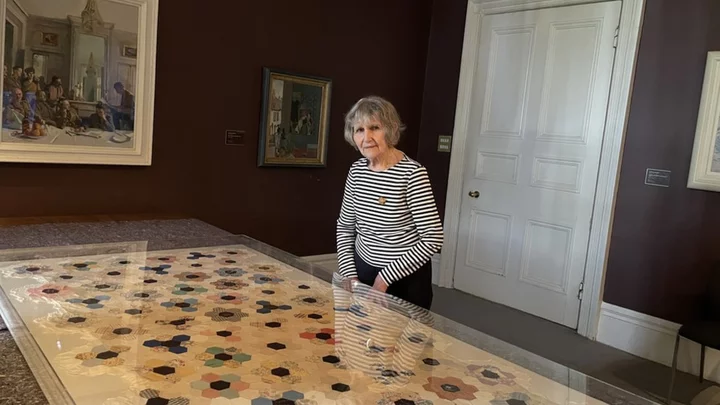
'I celebrated my 10th birthday in Changi PoW camp'
Olga Henderson, 91, has been reunited with a quilt she made with her fellow child prisoners.
2023-08-16 16:49
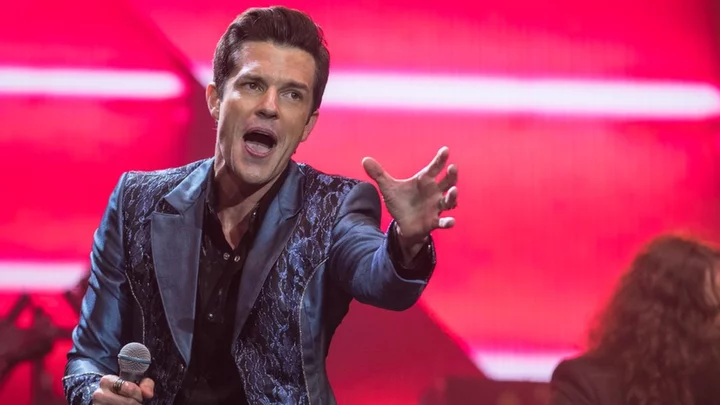
The Killers apologise for offending fans in Georgia with Russian 'brother' remark
Fans booed frontman Brandon Flowers for asking them to welcome a fan from neighbouring Russia.
2023-08-16 16:46
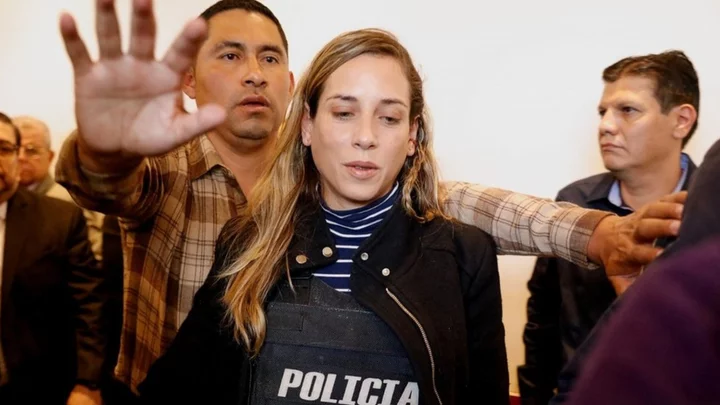
Ecuador election: 'I'm wearing a bulletproof vest 24 hours a day'
Andrea González aims to be vice-president in Ecuador after her party's presidential candidate was shot dead.
2023-08-16 16:29
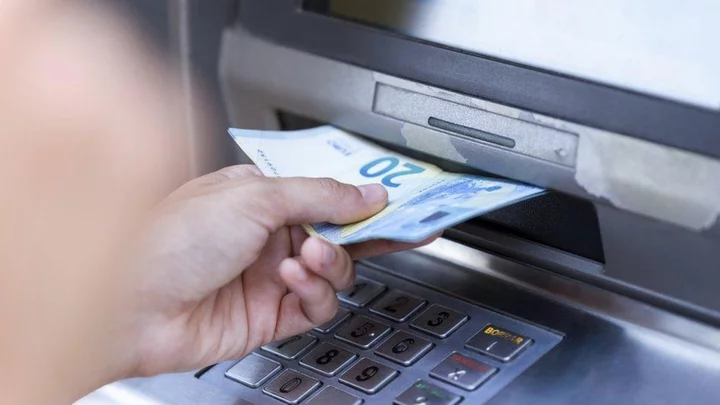
Bank glitch allowed customers to withdraw extra cash
The Bank of Ireland warns that transfers and withdrawals will be applied to customers’ accounts.
2023-08-16 16:25
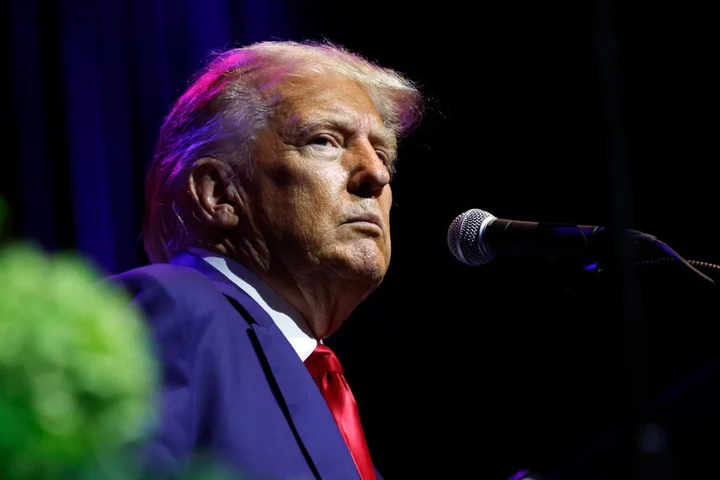
How did a Trump charge sheet get published hours before grand jury vote?
It was the URL heard around the world. On Monday, a document seemingly announcing 13 counts against Donald Trump was briefly published online on a Fulton County web system – before being deleted just as quickly – kicking off rampant speculation about the looming indictment and instantly fuelling claims of foul play from the former president. The initial charge sheet seemed to show an extensive list of criminal charges against Mr Trump stemming from the long-running Georgia investigation into his attempts to overturn the state’s 2020 election results, according to Reuters, which first reported the document. It was published hours before the grand jury eventually voted to indict the former president and a group of his closest allies for running a criminal enterprise to overturn the 2020 election in the state and keep Mr Trump in power. The document, which can still be viewed on the Reuters website, was quickly taken down. Hours later, when the indictment was handed down, it appeared under a different case code. It also included Mr Trump’s 18 co-defendants – something the original document did not. But there were some similarities between the initial posting and the final charge sheet, with both including the exact same 13 charges against the former president. In a statement to The Independent on Tuesday, the Fulton County clerk’s office explained in greater detail what prompted the confusion. It said Ché Alexander, Fulton County Clerk of Superior and Magistrate Courts, used an online document system to conduct a “trial run” of posting a large indictment to test for potential issues. “Unfortunately, the sample working document led to the docketing of what appeared to be an indictment, but which was, in fact, only a fictitious docket sheet,” they explained. “Because the media has access to documents before they are published, and while it may have appeared that something official had occurred because the document bore a case number and filing date, it did not include a signed ‘true’ or ‘no’ bill nor an official stamp with Clerk Alexander’s name, thereby making the document unofficial and a test sample only.” The office, once it was aware of the mixup, said it “immediately removed the document and issued correspondence notifying the media that a fictitious document was in circulation and that no indictment had been returned by the Grand Jury,” the statement added. However, this explanation was only available after the fact. Throughout Monday, little was known about what prompted the initial document to appear then disappear. Officials only said it was “fictitious.” The lack of information was quickly exploited by Mr Trump. In an email to his supporters asking for donations to his campaign, the former president claimed the document was another sign of the “Witch Hunt” against him and asked his supporters for more money. “This is an absolute DISGRACE. These rabid left-wing prosecutors don’t care about uncovering the truth. They don’t care about administering justice or upholding the rule of law,” he wrote to his donors in an email with the subject line “LEAKED CHARGES AGAINST ME.” “The Grand Jury testimony has not even FINISHED – but it’s clear the District Attorney has already decided how this case will end.” Online commentators also began speculating that the document was a hack or maybe a leak; after all, the unthinkable and unexpected already happened once in recent months, with the 2022 leak of a draft opinion of the Supreme Court’s eventual decision overturning Roe v Wade. Republican lawmakers meanwhile flew into a rage. "This is OUTRAGEOUS government conduct and is a very legitimate basis to deem the entire Grand Jury process tainted & corrupted,” Florida Representative Matt Gaetz wrote on social media. “MOTION TO DISMISS!!!" The overarching political narratives – judgment day for Mr Trump, or a political prosecution gone too far – had for a time outrun the verifiable facts on the ground. All the while, the actual grand jury process, the body that eventually recommended Mr Trump’s fourth major criminal indictment of the year, continued throughout Monday, extending into after-hours testimony from Georgia officials. Outside, police continued with a stepped-up security posture including K-9 dogs. Media organisations surrounded the court complex, with lines of tents and cameras that heightened the atmosphere of anticipation. When the indictment was unsealed it emerged that there were 13 felony charges against Mr Trump, including RICO, conspiracy to commit forgery, filing false documents, Solicitation of Violation of Oath by Public Officer and more. In addition, 18 Trump associates have also been indicted, including former White House chief of staff Mark Meadows and former New York City mayor Rudy Giuliani. The document drama was the latest bizarre twist in a high-profile investigation that began shortly after an infamous 2021 phone call, in which Mr Trump was recorded giving explicit requests for top state officials to “find” him enough votes to reverse Joe Biden’s victory in Georgia. Most recently, Mr Trump has falsely claimed Fulton County District Attorney Fani Willis had an affair with a rapper who was the target of a racketeering probe by her office. Read More Trump indictment live: Trump and 18 allies ordered to surrender on RICO charges for Georgia election plot What is Georgia’s RICO law? Why a law created to prosecute the Mafia is being leveled against Trump All the bombshell charges against Trump and his allies in Georgia RICO case How did a Trump charge sheet get published hours before grand jury vote? Truth Social are doxxing grand jurors who indicted Trump in Georgia Trump claims mystery press conference report clears him of Georgia election charges
2023-08-16 15:29
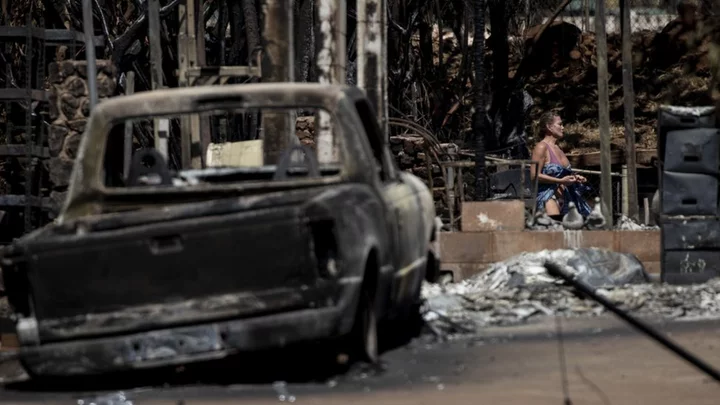
Hawaii fires: First victims named as death toll reaches 106
They have been named as Lahaina residents Robert Dyckman and Buddy Jantoc, both in their seventies.
2023-08-16 15:20
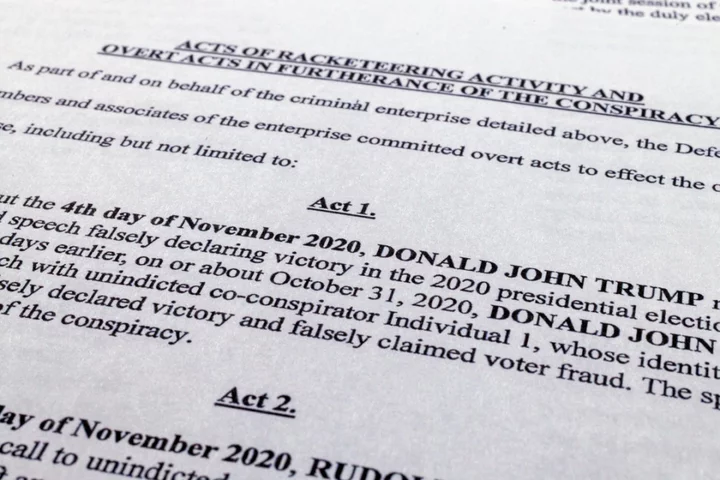
Who are the 30 ‘unindicted co-conspirators’ in Georgia’s massive criminal case against Trump?
A sweeping criminal indictment targeting Donald Trump and 18 co-defendants – including members of his former legal team, White House chief of staff and government officials – also lists 30 unnamed co-conspirators who are accused of supporting the former president’s alleged criminal enterprise to overturn the 2020 presidential election in the state of Georgia. The identities of those unnamed (and, as of now, uncharged) co-conspirators were not immediately clear following a state grand jury’s indictment on 14 August. But many of the details of their alleged actions bear similarities to Trumpworld figures who were identified in previously-reported events described in the indictment. In all, the sweeping charging document outlines a vast criminal conspiracy case connecting the actions of more than 50 people accused of trying to undermine and subvert the outcome of the 2020 election, including attempts to appoint a fraudulent slate of electors loyal to the former president, a harassment campaign targeting election workers, and efforts to copy and distribute sensitive voting machine data from a state elections office. Typically, prosecutors include “unindicted co-conspirators” who are believed to have conspired with the named defendants to commit a crime or multiple crimes, as indicated in the massive RICO case against Mr Trump and his allies. But prosecutors have either provided them some immunity from prosecution in exchange for their testimony or have reached another arrangement. As with the federal indictment targeting Mr Trump’s efforts to subvert the 2020 election, many of the alleged actions outlined in the Georgia case echo those uncovered by the House select committee investigating January 6. Many of the unindicted co-conspirators in the Georgia case are known to the grand jury, the document states. Unindicted co-conspirators nine through 19 are likely the other fake electors who have not been charged in the indictment, while unindicted co-conspirators 24 through 29 are among those likely involved in a scheme to hijack voting machine software in Coffee County. Several people allegedly involved in an effort to seize voting machine software and share files with other election deniers were charged with several crimes in the indictment. One key unindicted co-conspirator – No 20 – allegedly joined a White House meeting on 18 December 2020 involving Mr Trump and attorney Rudy Giuliani and Sidney Powell to discuss “certain strategies and theories intended to influence the outcome” of the 2020 election, “including seizing voting equipment” and appointing Ms Powell “as special counsel with broad authority to investigate allegations of voter fraud in Georgia and elsewhere,” according to the indictment. The first unindicted co-conspirator listed in the indictment is accused of discussing a draft speech with Mr Trump on 31 October 2020, days before Election Day, to falsely declare victory and make baseless allegations of widespread voter fraud and manipulation. The House select committee previously reported that then-President Trump consulted with Tom Fitton of right-wing activist group Judicial Watch on that same day. An email sent to Mr Fitton and obtained by the National Archives includes Mr Trump’s false declarations of voter fraud and a statement claiming that “we had an election today and I won” – a message that January 6 committee member Zoe Lofgren said amounted to instructions for an “intentional” and “premeditated” effort to subvert the democratic process. A second unindicted co-conspirator allegedly received a voice message about voter fraud from Mr Giuliani on 3 November 2020 as well as messages about organizing a fraudulent slate of electors loyal to Mr Trump – including a key meeting on 14 December 2020, when the 16 so-called “alternate” electors convened at the state capitol. The third unindicted co-conspirator referenced in the indictment joined Mr Giuliani and former Trump campaign attorneys Jenna Ellis and Sidney Powell at a now-infamous 90-minute press briefing at the Republican National Committee headquarters bloated with false claims and wild accusations about election fraud and manipulation on 19 November 2020. Ms Powell and Ms Ellis – among members of the so-called “strike force” behind a spurious and failed legal campaign to challenge election results – are now among the 19 co-defendants in the Georgia indictment. The other three people who stood behind the lectern at that press conference were GOP operatives Joseph diGenova, Victoria Toensing and Boris Epshteyn. Robert Sinners – the head of Mr Trump’s Georgia campaign operations whose role in the alleged scheme to subvert the state’s election results – is likely the fourth unnamed and unindicted co-conspirator in the indictment. The indictment outlines several events in the days after Election Day previously uncovered by the House select committee, including correspondence surrounding the fake elector scheme, that match descriptions in the Georgia case. The indictment also notes a White House meeting on 25 November 2020, when Mark Meadows, Trump campaign attorneys and two unindicted co-conspirators met with Pennsylvania state lawmakers to discuss holding a special legislative session to contest election results. Georgia’s current Lt Governor Burt Jones, a former state senator, is likely the eighth unnamed and unindicted co-conspirator in the indictment. The indictment quotes a post from his Twitter account on 7 December, 2020, in which he calls on supporters to “sign the petition” for a special legislative session to review the outcome of the 2020 election, a message shared by Mr Giuliani. That same co-conspirator also was involved with correspondence about the fake elector plot with other co-defendants in the case, according to the indictment. Read More Trump claims mystery press conference report clears him of Georgia election charges: Live updates Mob boss law, 30 mystery co-conspirators and an unmasked plot: Key takeaways Trump’s Georgia indictment Four indictments, 91 criminal charges, up to 700 years in jail: Trump’s legal woes in numbers Meadows, Giuliani, Jenna Ellis and Sidney Powell: The 18 defendants charged with Trump in Georgia RICO case
2023-08-16 14:52
